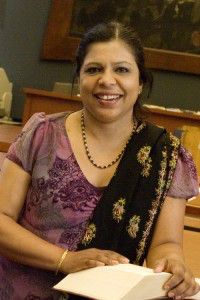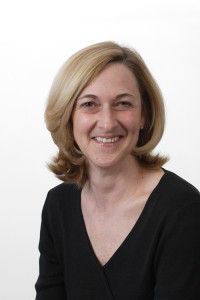

Of the 12 Boston University faculty members promoted to full professor positions this year two professors, Nazli Kibria and Susan Fournier, were women, BU officials said.
“We encourage the search committees to hire an excellent and diverse pool,” said Julie Sandell, associate provost for faculty development at BU.
Sandell said within the BU professorial ranks the women-to-men ratio grows increasingly smaller as the ranks grow more senior.
Women comprise about 47 percent of assistant professors, 35 percent of associate professors and 21 percent of full professors, she said.
While women are generally underrepresented in certain fields, their status is undergoing change, with more and more women entering increasingly higher-ranked positions, said Kibria, who will become a full professor of sociology in the fall.
“The move from associate professorship to full professorship does not have a particular schedule,” Kibria said. “You have to request it and women may be more reluctant to ask because of family responsibilities, etc. It’s a nationwide trend, not just at Boston University.”
BU’s gender ratios within professorial ranks are similar to those of other universities, Sandell said.
At Harvard University, women represent 30 percent of assistant professors, 20 percent of associate professors and 9 percent of full professors during the 2011-12 academic year, according to the school’s Faculty Development and Diversity report for the year.
At the Massachusetts Institute of Technology, women-to-men ratios are low because MIT is “primarily a science and engineering school,” said Nancy Hopkins, a MIT biology professor who organized and chaired the school’s first Gender Equity Committee.
In general, women are underrepresented in such fields as math, physics, computer science, mechanical engineering and economics, she said.
At Harvard, the differences between the percentage of women teaching humanities and social sciences and the percentage of women teaching natural, life and physical sciences grew more stratified as the ranks climb in the 2011-12 academic year, according to the FD&D report.
Among the full professors at Harvard this year, the percentage of those teaching humanities and social sciences, about 45 to 49 percent, were about twice as large as the percentage of those teaching “hard sciences,” about 6 to 20 percent.
“Women with doctorates are much more common in social sciences than in engineering,” Sandell said.
Variability not only exists among different disciplines, but also in BU’s promotional process from year to year, she said.
“This year, 17 percent . . . of the new full professors are women, less than the percentage of women in the associate professor pool,” Sandell said. “But last year it was 42 percent . . . more than the percentage of women in the associate professor pool.”
Victoria Jue, a junior in the College of Arts and Sciences, said that she hasn’t noticed much disparity.
“I think the ratio of male to female professors has been more or less equal in my experience,” she said.
However, Gareth Goh, a student in the Graduate School of Arts and Sciences, said the majority of BU professors seem to be men.
“I went for my undergrad here as well and in general I find that there are a lot more male professors than female professors,” he said.
While she hasn’t spent as much time at BU as Jue and Goh, College of Communication freshman Marisa Flit said she has only been taught by one female professor at BU.
“I don’t know if it’s because they don’t employ them,” Flit said, “but the classes I’ve been taking have generally been taught more by male professors.”
This is an account occasionally used by the Daily Free Press editors to post archived posts from previous iterations of the site or otherwise for special circumstance publications. See authorship info on the byline at the top of the page.



